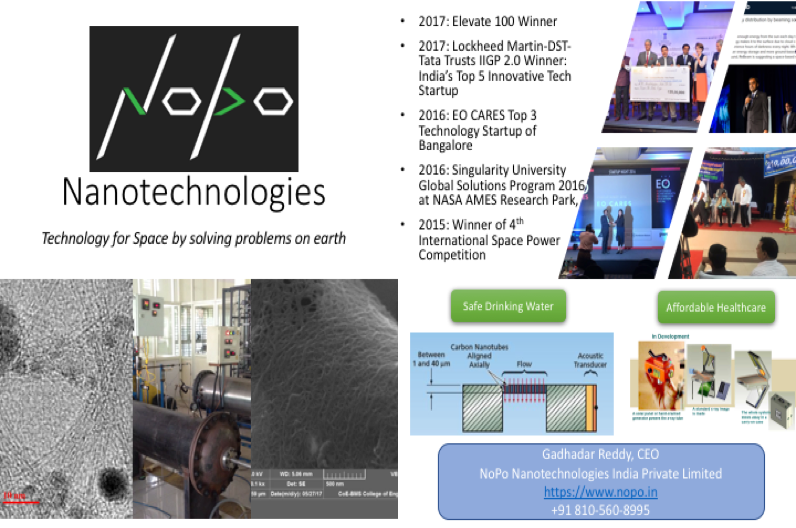NoPo Nanotechnologies
| Showcase | Criterion |
|---|---|
| Showcase articles feature products, start-ups or service providers that IoTForum Editors consider impactful, innovative or successful. They will focus more on technology, business model and learnings for the wider ecosystem. We are starting with IoTnext 2017 Award winners and special mentions. If you consider that your offering should be covered send a draft to IoTForum using contact us option | Nopo was a special mention at IoTNext 2017 |
Carbon nanotubes (CNTs) are allotropes of carbon with a cylindrical nanostructure. These cylindrical carbon molecules have unusual properties, which are valuable for nanotechnology, electronics, optics and many other fields. These properties of carbon nanotubes have caused researchers and companies to consider using them in several area including healthcare, transportation, space exploration, civil engineering, construction, gas, steam turbines, wind power generators etc.
Nopo Nanotechnogies, started with the objective of developing technology to put the first humans on Mars, is using CNTs to solve human problems. The company has developed the NoPo HiPCO process for producing Carbon Nanotubes. They envisioned themselves living on mars and listed potential problems that could be solved using Carbon Nanotubes. The solutions thus created needed to be self-contained, simple and capable of performing multiple functions. This led to the development of water filters that are 10-100x better than incumbent. The filters are capable of extracting pure drinking water from highly contaminated sources making use of Carbon Nanotubes' unique ability to transport water molecules. The structure designed for water filtration is capable of functioning as an electron emitter. Electron emission forms the core of a wide array of scientific and medical diagnostic equipment. NoPo is working with a non-profit, Street Physics to develop portable X-Ray machines using this technology. The machine fits inside a tiny briefcase and can be powered by solar/hand cranking. This could be the ultimate on-field diagnostic both for humans and equipment.
As these technologies were discussed, the company found that they solve a big problem on Earth and can improve people's lives considerably. Thus the technology that was designed with mars in mind is being used to improve people's lives on earth. The company has coined the term "Reverse-Apollo" for this approach. Instead of developing technology for space and waiting for it to trickle down to people over time, they are developing technology with space in mind; distributing it to people to improve their lives and making space rated hardware cheap and accessible.
The company, dedicated to offer its customers high reliability, short wait periods and competitive costs, believes its systems will help it reduce satellite cost and make space access affordable.
References:
- https://nopo.in
- http://markets.businessinsider.com/news/stocks/Carbon-Nanotubes-Market-to-hit-USD-8-1bn-by-2024-Global-Market-Insights-Inc-1007881711
- https://globenewswire.com/news-release/2017/11/16/1193952/0/en/Carbon-Nanotubes-Market-to-be-worth-US-6-8-bn-by-2023-Transparency-Market-Research.html
- http://www.understandingnano.com/what-are-carbon-nanotubes.html
